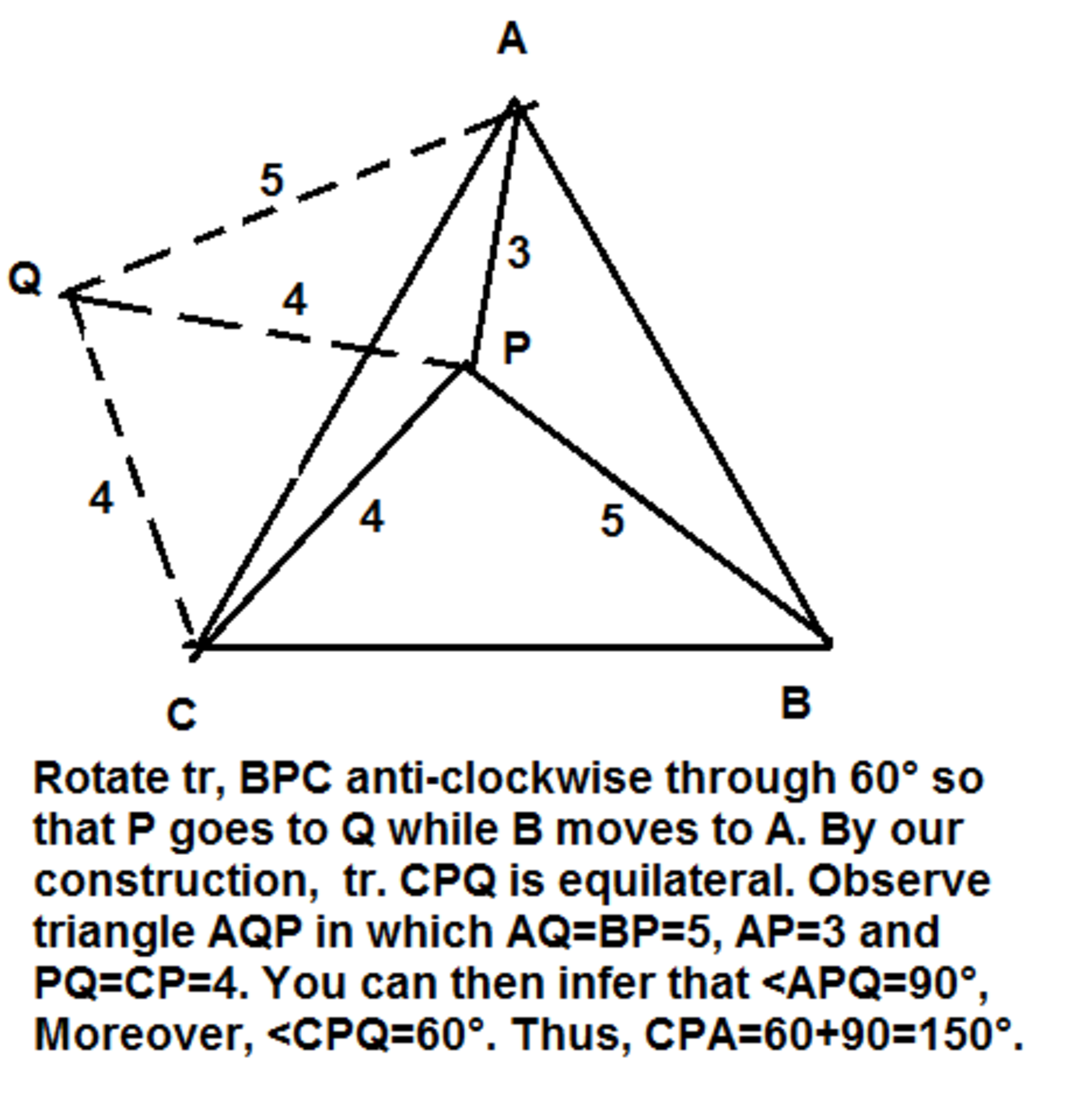Wasn't it easy to find an equilateral triangle's side
A point P inside the equilateral triangle A B C of side length ′ a ′ has the distances 3 , 4 and 5 from the vertices A , C and B , respectively. Find a .
This problem is not original.
The answer is 6.766.
This section requires Javascript.
You are seeing this because something didn't load right. We suggest you, (a) try
refreshing the page, (b) enabling javascript if it is disabled on your browser and,
finally, (c)
loading the
non-javascript version of this page
. We're sorry about the hassle.
5 solutions
Could you elaborate on how you prove that angle APQ is 90 degrees?
Log in to reply
Triangle A P Q is a 3 / 4 / 5 triangle, i.e., a Pythagorean triple. Then since vertex P is shared by the two 'short' sides we can conclude that ∠ A P Q is 9 0 degrees.
Rotate about C by angle 60 and use cosine formula
likewise.. sir
Using an identity 2 Δ x x x = Δ a a a + Δ b b b + Δ c c c + 3 Δ a b c we can easily get a formula for any three numbers. This is closely related to the formula of the Napoleon triangle side. The triangle side as explained in this problem is in fact 3 x where x is the length of the Napoleon equilateral triangle. The formula is: ( 4 3 A + a 2 + b 2 + c 2 ) / 2 where A is area of a triangle formed from a , b , c .
Fine result.
These kind of problems can be solved for any values of distances of point P from the three vertices. I have a generalisation for this using rotation and then evaluating the areas of the rotated figures.

Draw a point Q so that triangle A C Q has side lengths C Q = 4 , A Q = 5 and A C = a being the side of the given equilateral triangle A B C . This makes triangle A C Q congruent to triangle B C P .
Then, since C P = C Q = 4 , triangle P C Q is isosceles. Also, since ∠ B C A = 6 0 degrees and triangles A C Q and B C P are congruent, we have that ∠ P C Q = 6 0 degrees as well. This fact, together with the facts that C P = C Q = 4 , implies that triangle P C Q is in fact equilateral, and thus P Q = 4 . But with P Q = 4 , A P = 3 and A Q = 5 we have that triangle A P Q is a right angled triangle with ∠ A P Q = 9 0 degrees.
Thus ∠ A P C = 6 0 + 9 0 = 1 5 0 degrees. Now we just need to use the Cosine Law on triangle A P C to find that
( A C ) 2 = ( A P ) 2 + ( P C ) 2 − 2 ( A P ) ( P C ) cos ( ∠ A P C )
⟹ a 2 = 3 2 + 4 2 − 2 ( 3 ) ( 4 ) cos ( 1 5 0 )
⟹ a 2 = 2 5 + 1 2 3 ⟹ a = 2 5 + 1 2 3 = 6 . 7 6 6 to 3 decimal places.